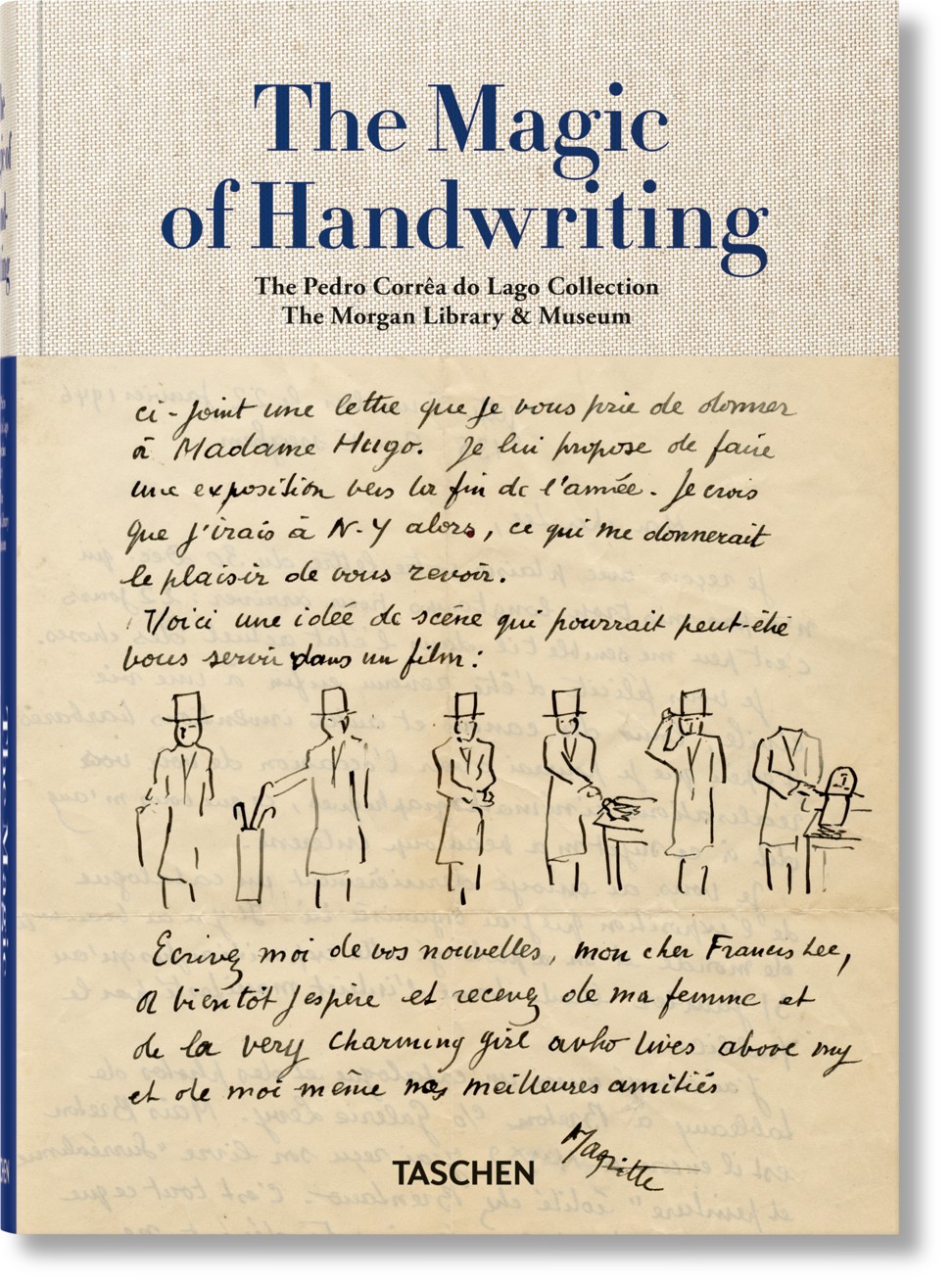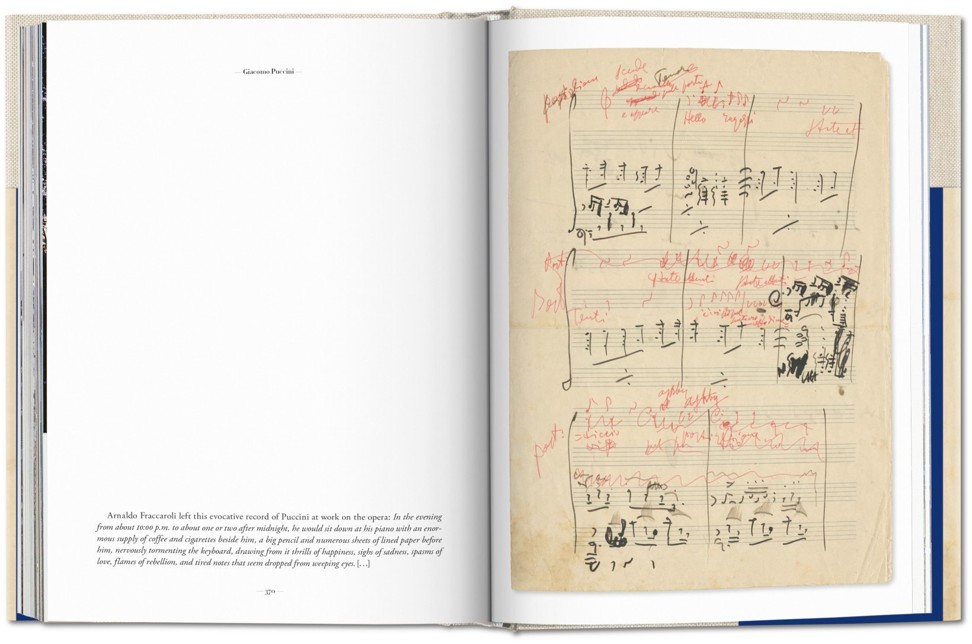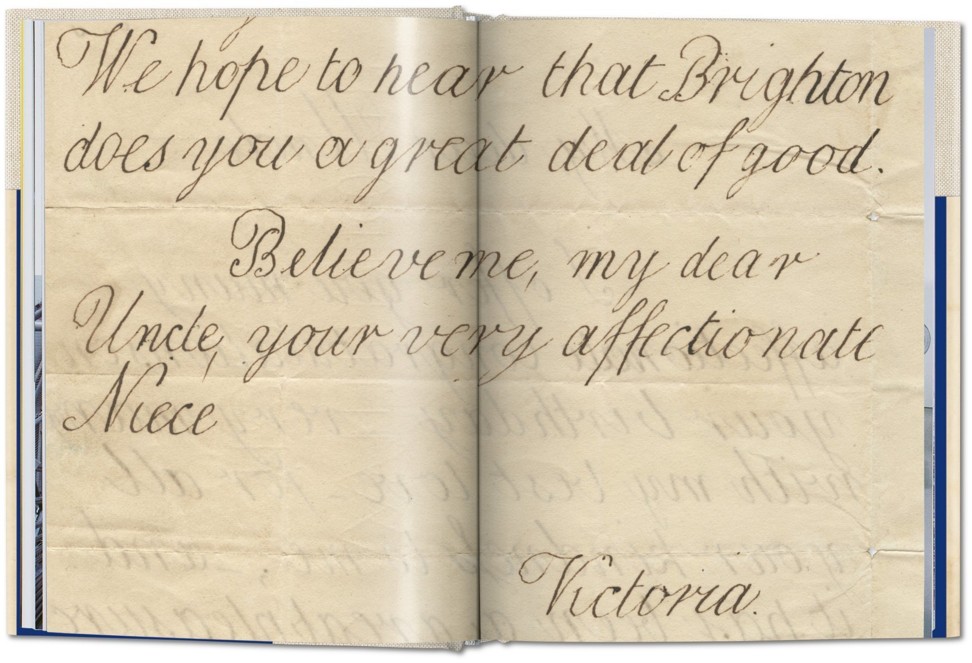
From Van Gogh to Walt Disney, The Magic of Handwriting showcases intimate letters from the past
- Book features 140 examples of penmanship spanning 900 years from the private collection of Brazilian art historian
- Included are handwritten letters from a seven-year-old who would become Britain’s Queen Victoria, and Albert Einstein being critical of Sigmund Freud

The Magic of Handwriting by Christine Nelson, published by Taschen. 4/5 stars
In 1888, Paul Gauguin left Paris to join fellow artist Vincent van Gogh in Arles, a city in the Provence region of southern France. The next year, Gauguin dramatically claimed in a letter that he had feared for his life during his time there.
“Unfortunately this friend went raving mad,” Gauguin wrote of Van Gogh, “and for a whole month I lived under the constant fear of a mortal or tragic accident.”
Following his breakdown, Van Gogh entered an asylum. In 1890 – as he was about to leave the facility – he wrote to his former landlord asking the man to forward him his meagre furniture (which the struggling artist had already immortalised in three paintings entitled Bedroom in Arles).

“Completely recovered,” he was eager to start life afresh. But within two months Van Gogh was dead, having shot himself in the stomach.
While the contents of those letters offer insights into the lives of the two artists, how much more rewarding to see those messages exactly as they were committed to paper – to appreciate the penmanship that flowed from the same paint-spattered hands that created Night Café at Arles (Madame Ginoux), The Starry Night and Sunflowers.

To that end, and in celebration of what many see as a visceral though threatened art form, respected German publisher Taschen has reproduced those Gauguin and Van Gogh letters alongside many more in The Magic of Handwriting.
The weighty volume showcases 140 examples of penmanship gleaned from the private collection of Brazilian art historian and autograph hound Pedro Corrêa do Lago. Over five decades he has amassed tens of thousands of letters, contracts, manuscripts and other documents signed by 5,000 legendary figures in art, literature, science, music, philosophy, politics and state affairs.
Spanning 900 years, Corrêa do Lago’s collection features words from 15th-century English king Richard III and early American statesman Benjamin Franklin, and from second world war codebreaker Alan Turing and 1970s New York graffiti artist Jean-Michel Basquiat.

Another highlight from the world of fine art is a contract composed by 34-year-old Claude Monet in 1875 that offered 35 paintings, eight already finished and 27 to come, as collateral for a loan of 1,000 francs from the brother of Édouard Manet.
That historic document “is a stark reminder of the economic challenges of the creative life”, writes The Magic of Handwriting’s author, Christine Nelson, a curator at New York’s Morgan Library & Museum, and came “just a year after the first group exhibition of the French artists known as the Impressionists – an event that changed the course of Western art.”
Elsewhere in The Magic of Handwriting, seeing Sir Isaac Newton’s family tree, actually sketched out by the man who in the 17th century transformed our understanding of the universe, feels like being let in on a secret.

As does a poignant letter, composed in 1955 by 80-year-old Winston Churchill – who had suffered a stroke two years earlier – to his first love, Pamela Plowden, whom he had fallen for six decades earlier, in India.
And although he was on friendly terms with Sigmund Freud, Albert Einstein confided in 1932 to his ex-wife that he distrusted psychoanalysis – which had been embraced by their troubled son – as “an extremely dangerous fashion”.
Disappointingly, too many of the specimens in The Magic of Handwriting are simply reproductions of autographed photographs (including, among others, Abraham Lincoln, Sitting Bull, Crown Prince Hirohito, Billie Holiday, Allen Ginsberg, Audrey Hepburn, Al Capone and the Beatles, as well as a studio shot of China’s last emperor Puyi, signed in 1934, once he had been installed by the Japanese as puppet ruler of Manchukuo, in the northeast of his home country).

More fun is the title page of a copy of Stephen Hawking’s A Brief History of Time (1988) “signed” – for a fellow Star Trek fan, in 2006 – with the theoretical cosmologist’s right thumbprint. Other word-light communications are jazzed up with informal doodles from the likes of Henri Matisse, Jackson Pollock, Charlie Chaplin, Salvador Dali, René Magritte and Walt Disney.
But it is the words rather than the images here that paint the fullest and most revealing portraits.
In a 1915 letter to an American missionary, China’s revolutionary leader Sun Yat-sen compares himself to the first Ming-dynasty emperor, who, he declares, had acted “to vanquish a foreign conqueror from one’s Fatherland”. The offending incursions by “alien races”, Sun explains, had been “the first time by the Mongol, the second time by the Manchu”.

These and other pieces included in The Magic of Handwriting provide, according to an introductory essay by Corrêa do Lago, “a tangible link to the past and operate as a sort of time machine, connecting us rather miraculously to people who have touched these papers before us and to the period in which they lived.
“These pieces are the closest bond we can form with these individuals and they allow us to share their emotions or participate in events that took place much before our birth.”
And fortunately for the reader – because the handwriting of many historical figures is not always as elegant and legible as that of, say, the seven-year-old girl who would later become Queen Victoria of the United Kingdom (yes, that means you, Oscar Wilde, Pablo Picasso and John F. Kennedy) – useful transcriptions are provided to clarify the more spider-like scribblings.